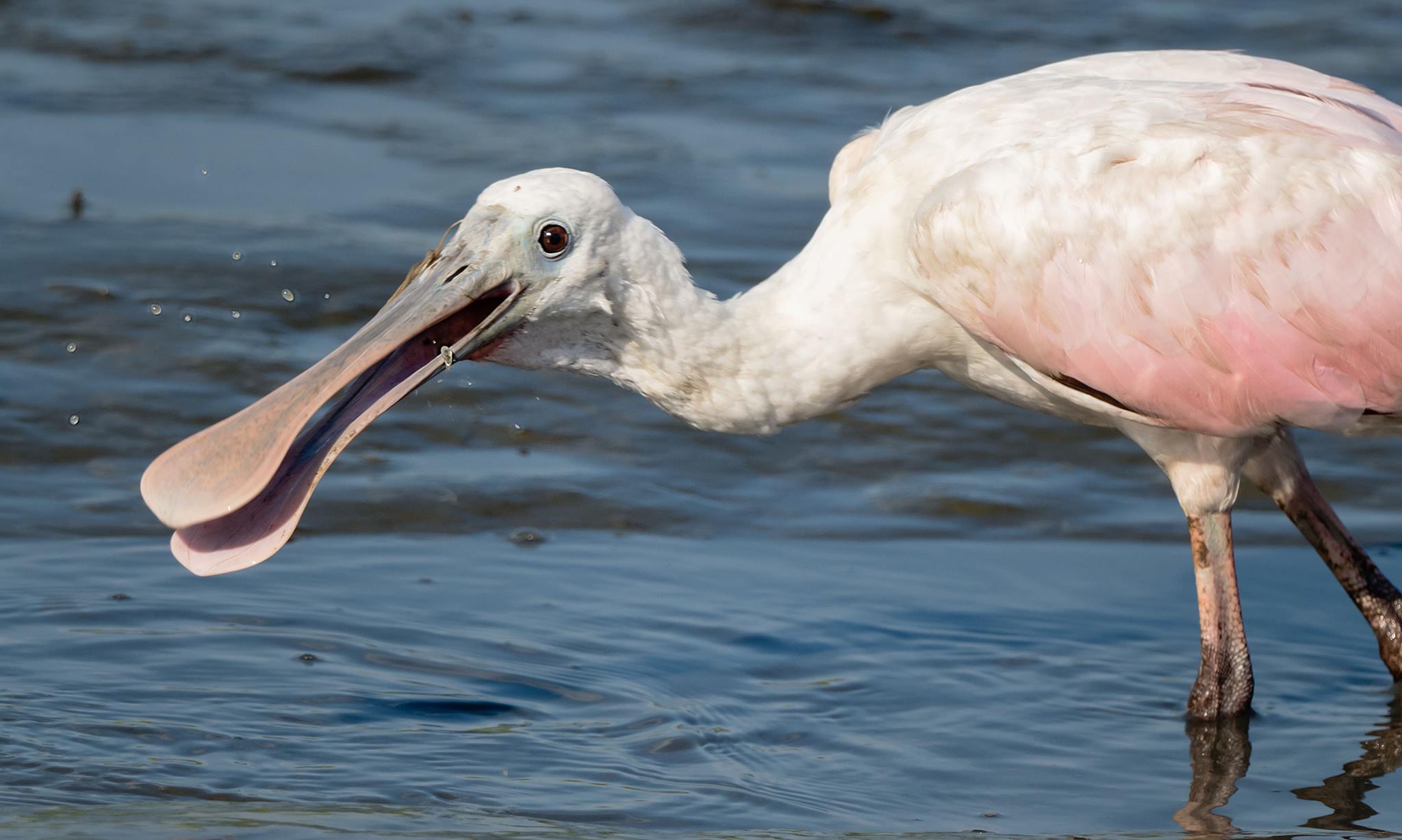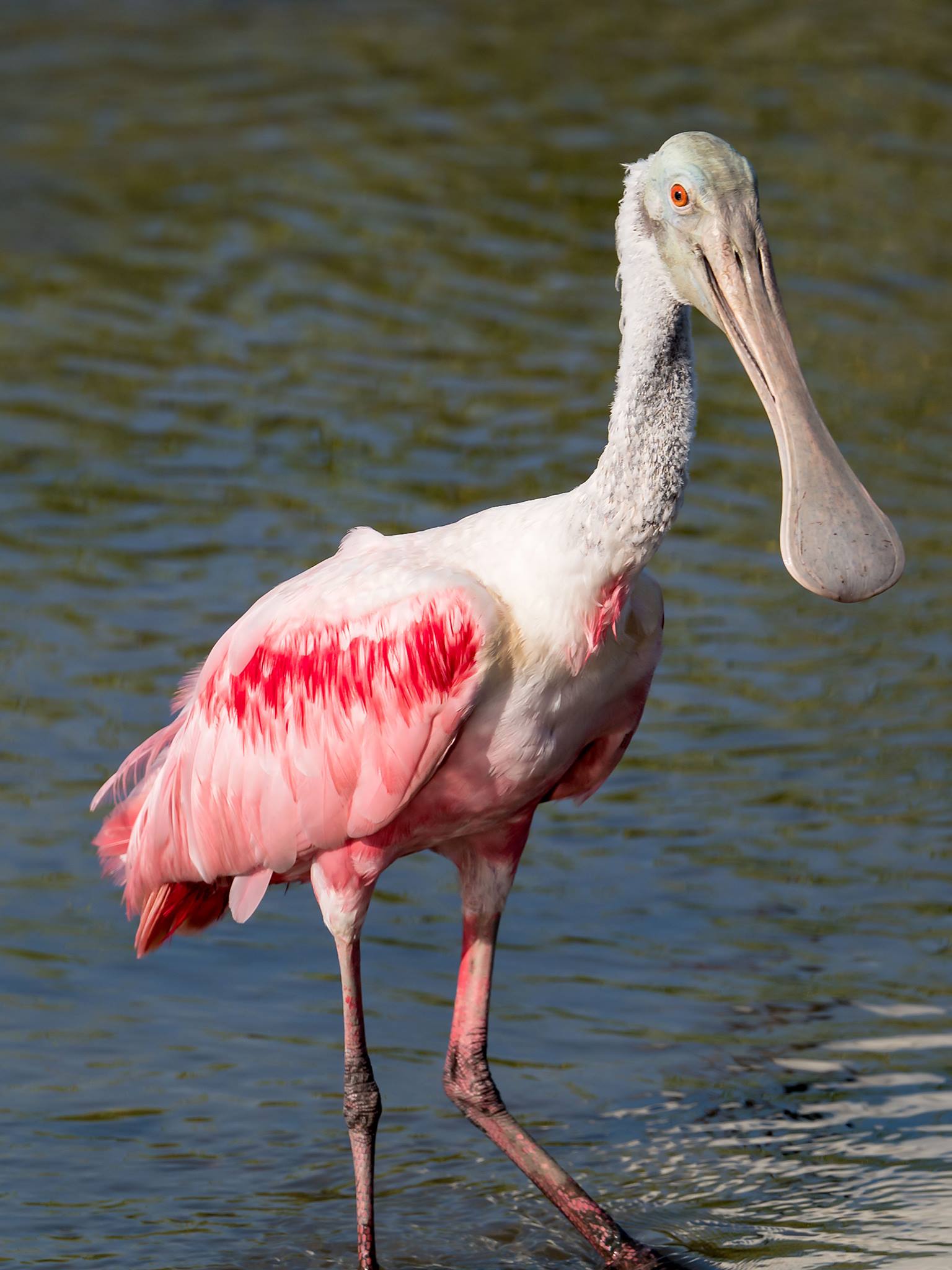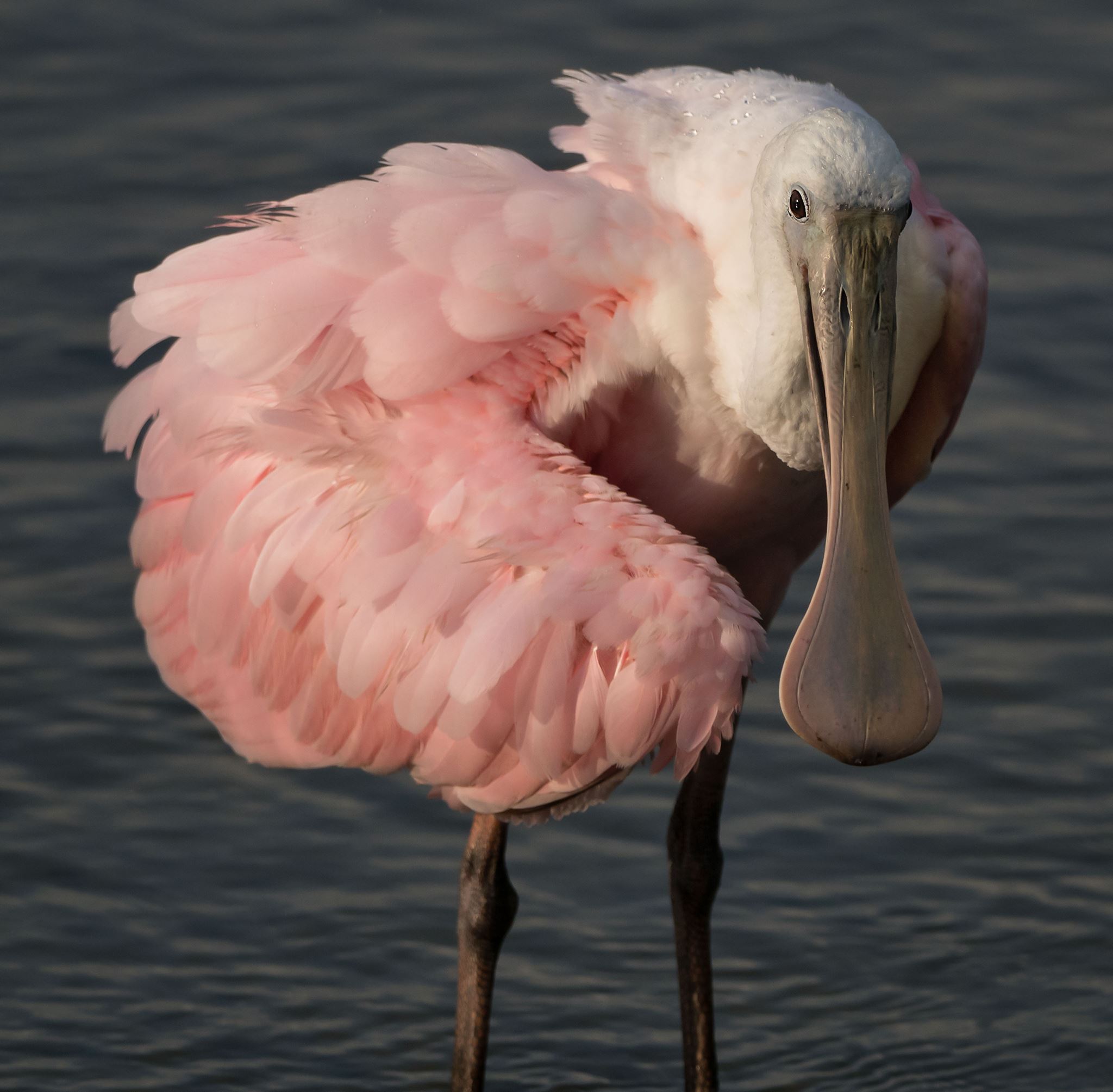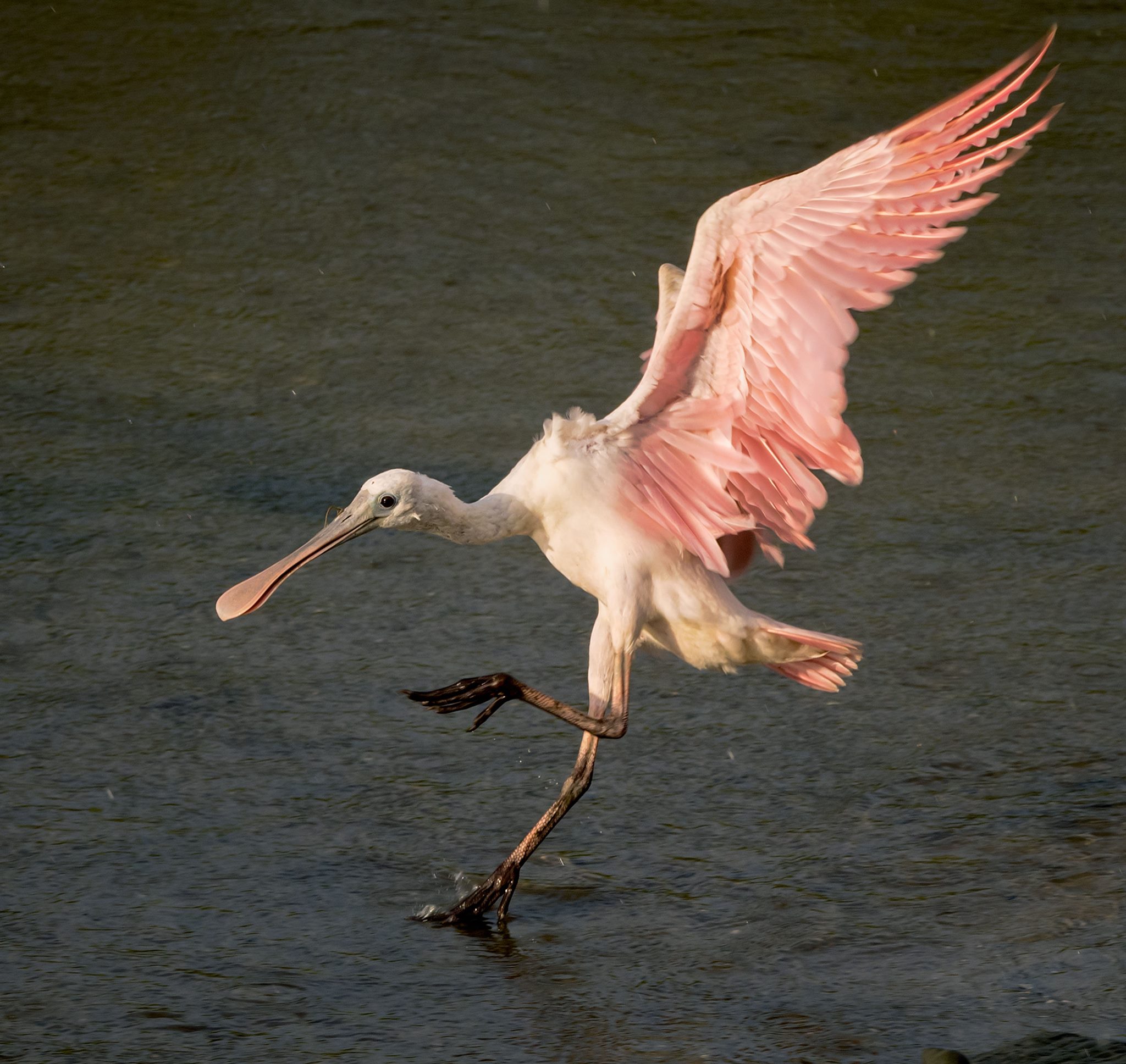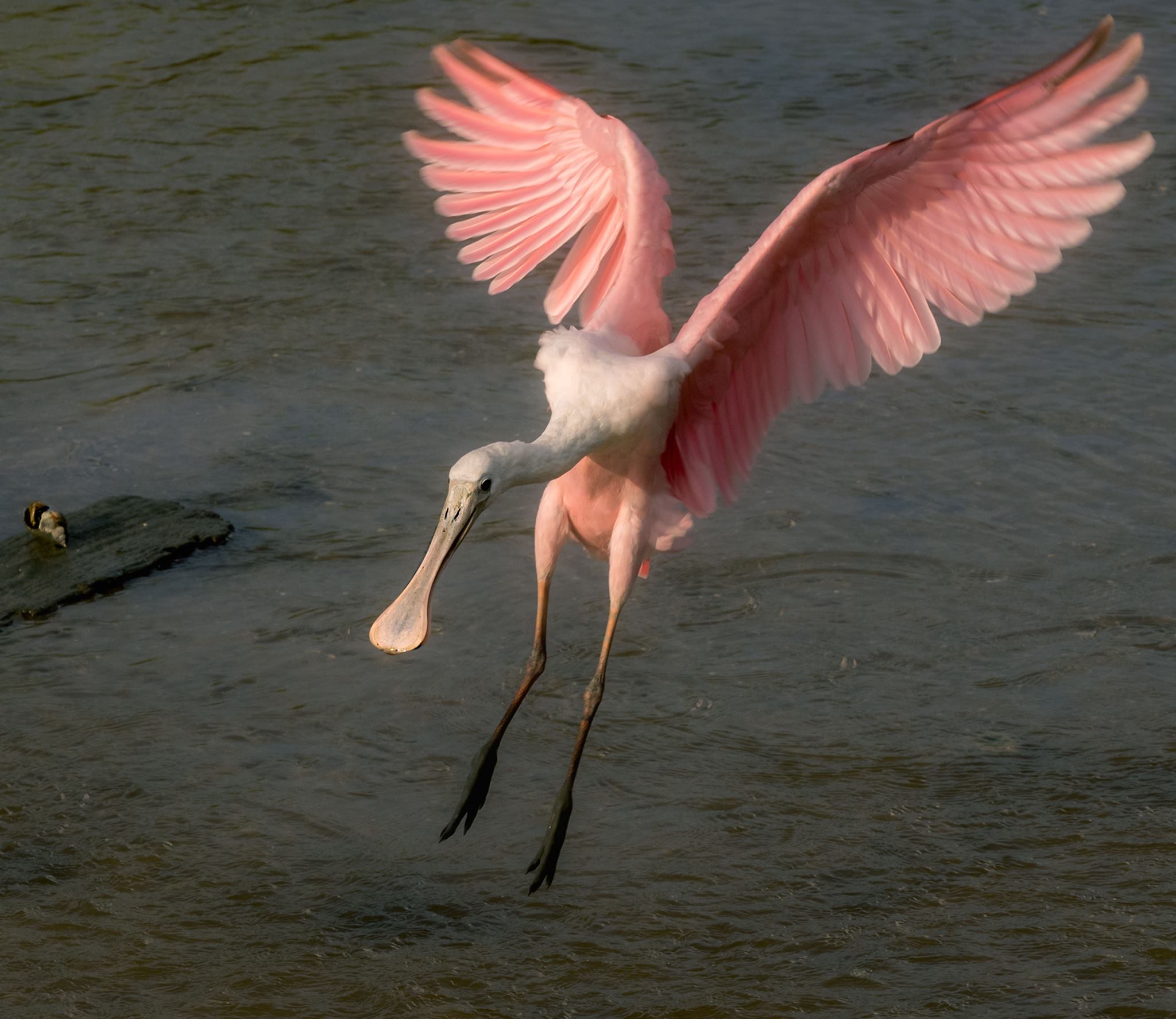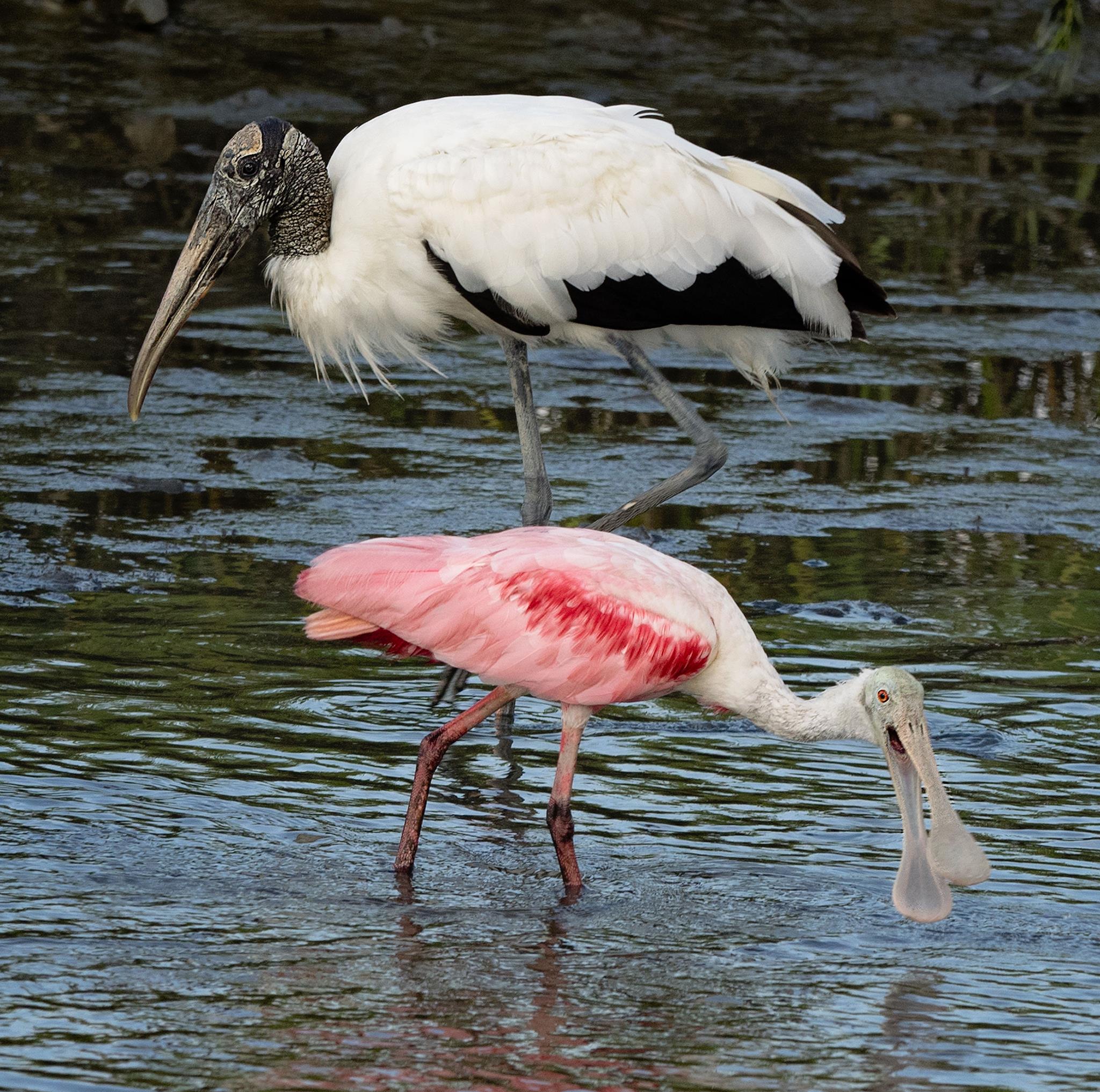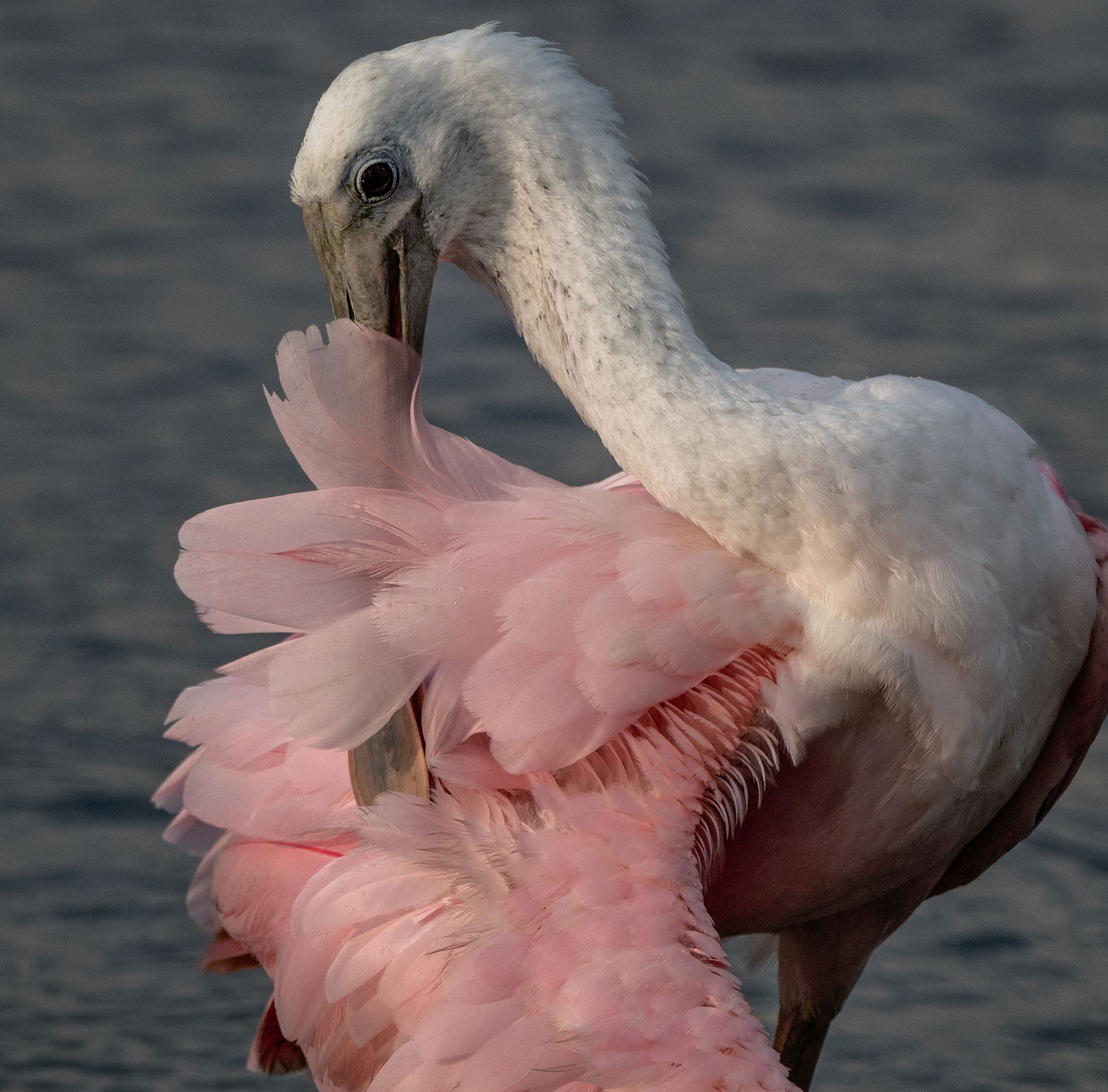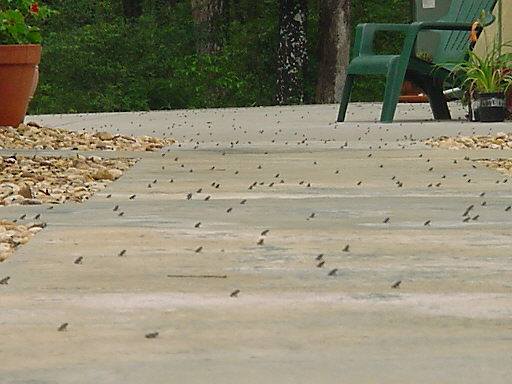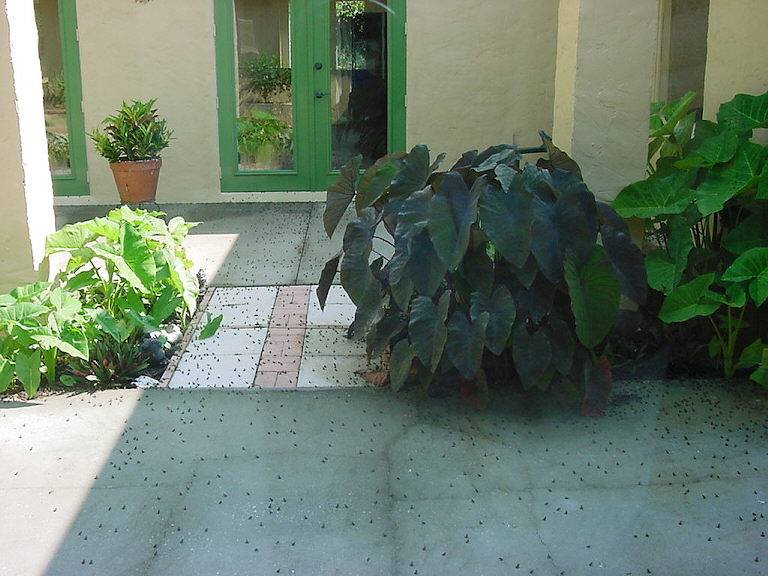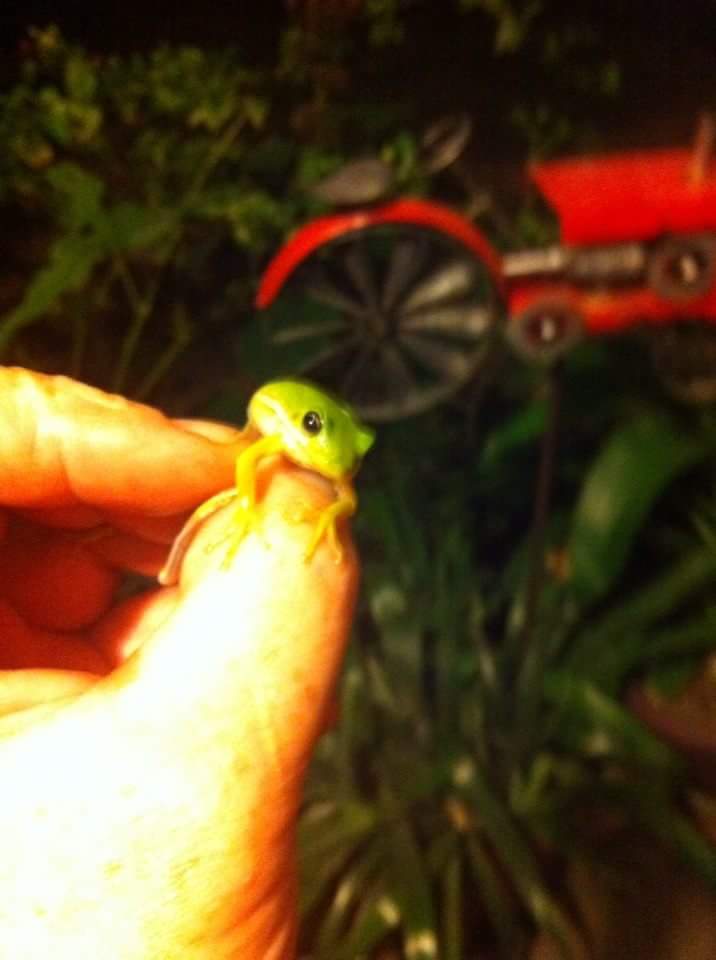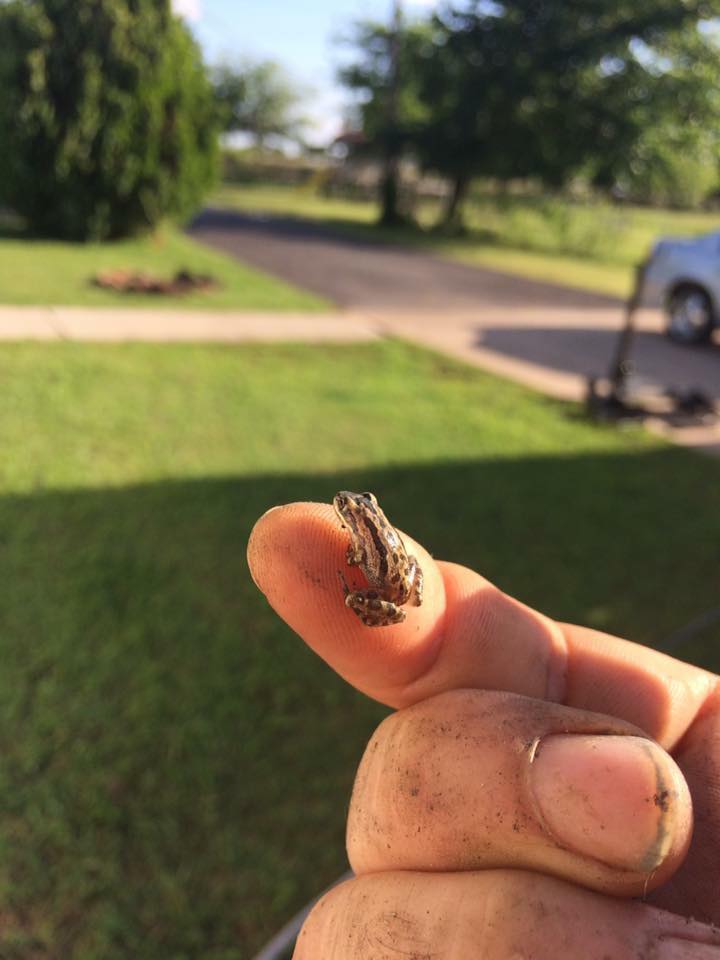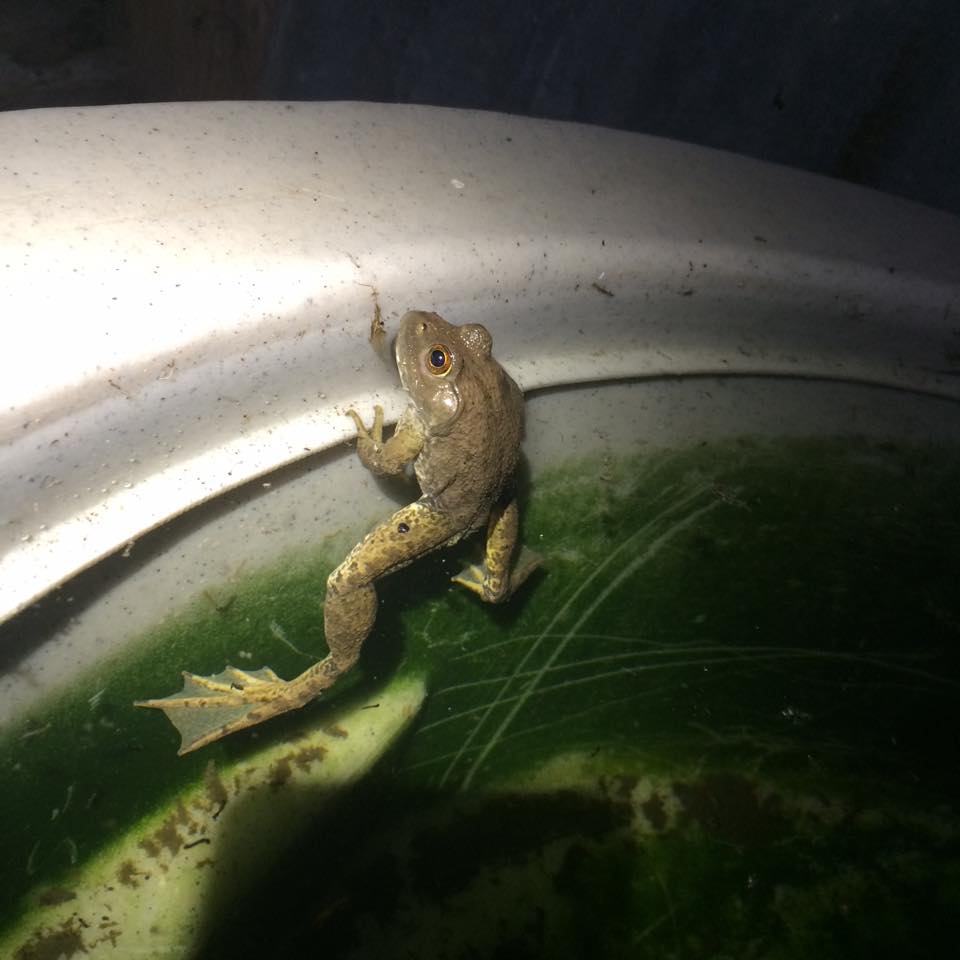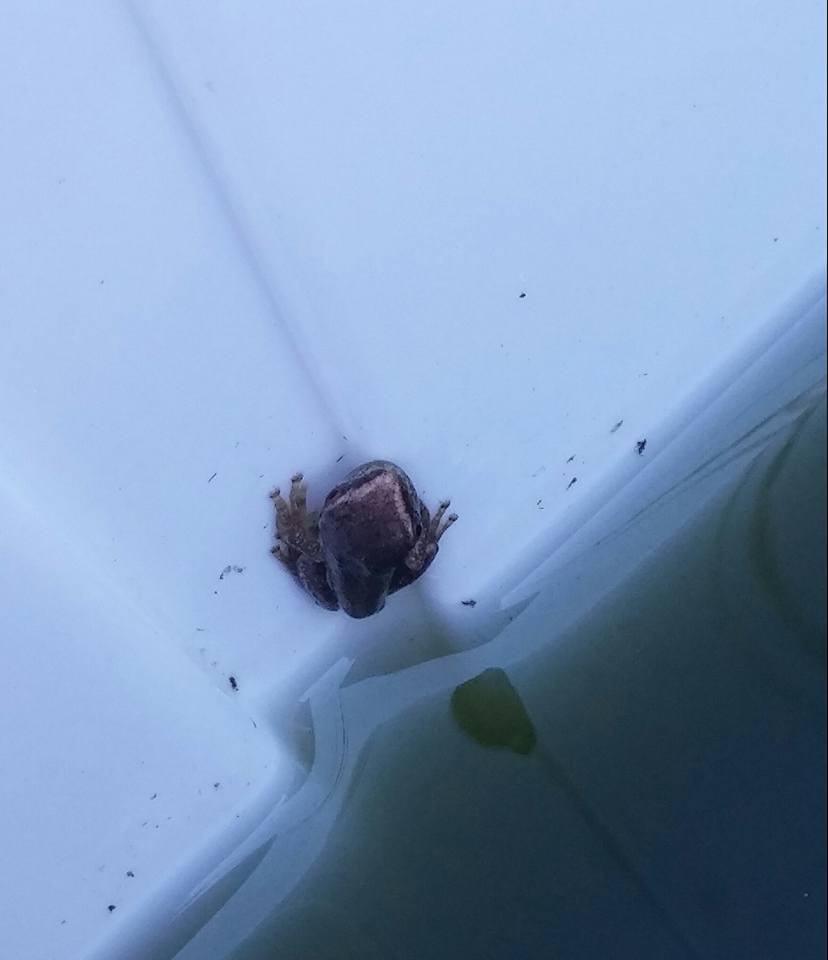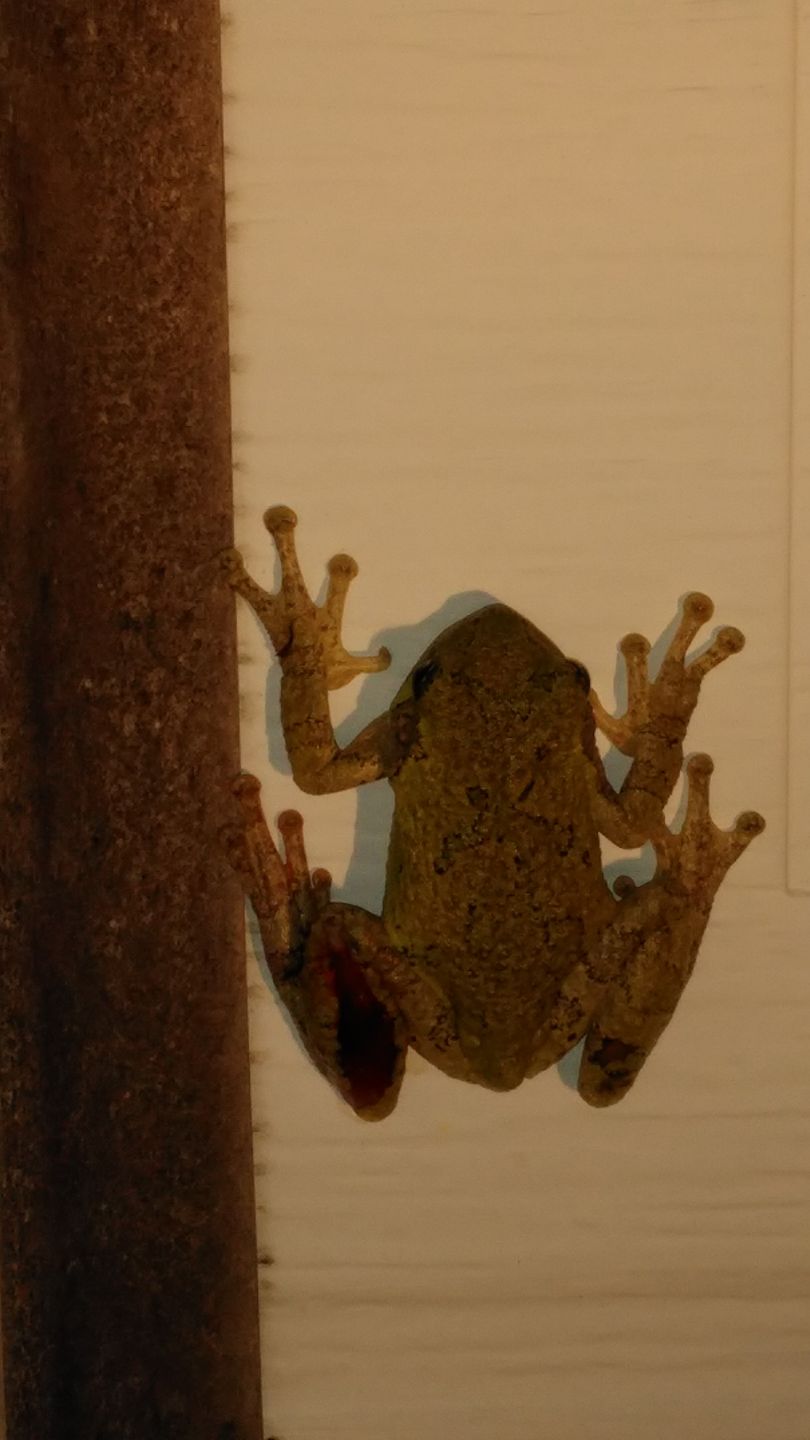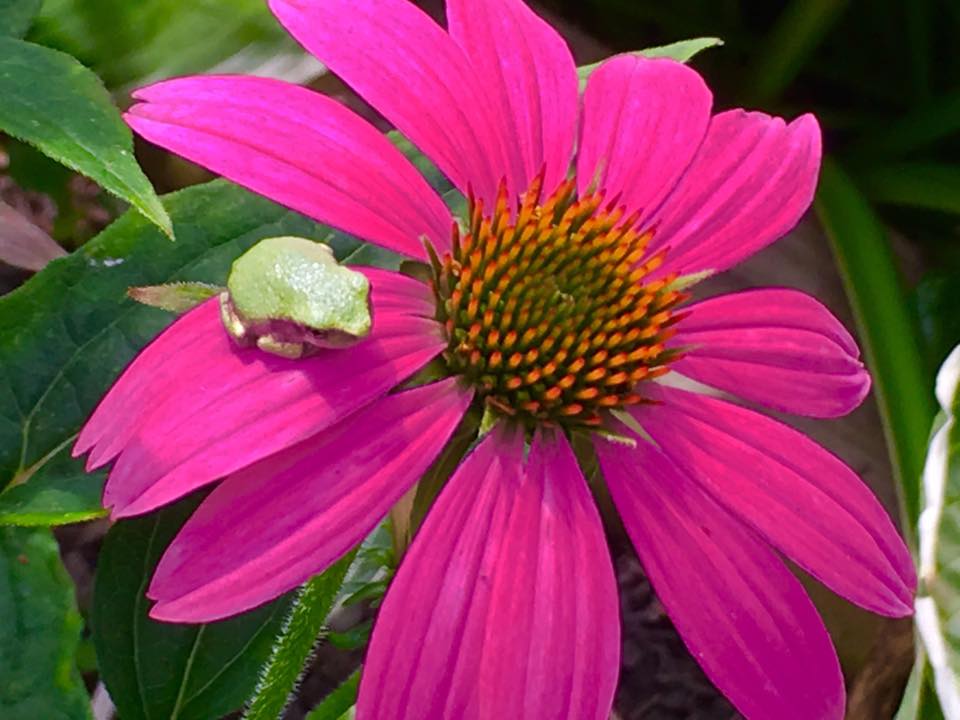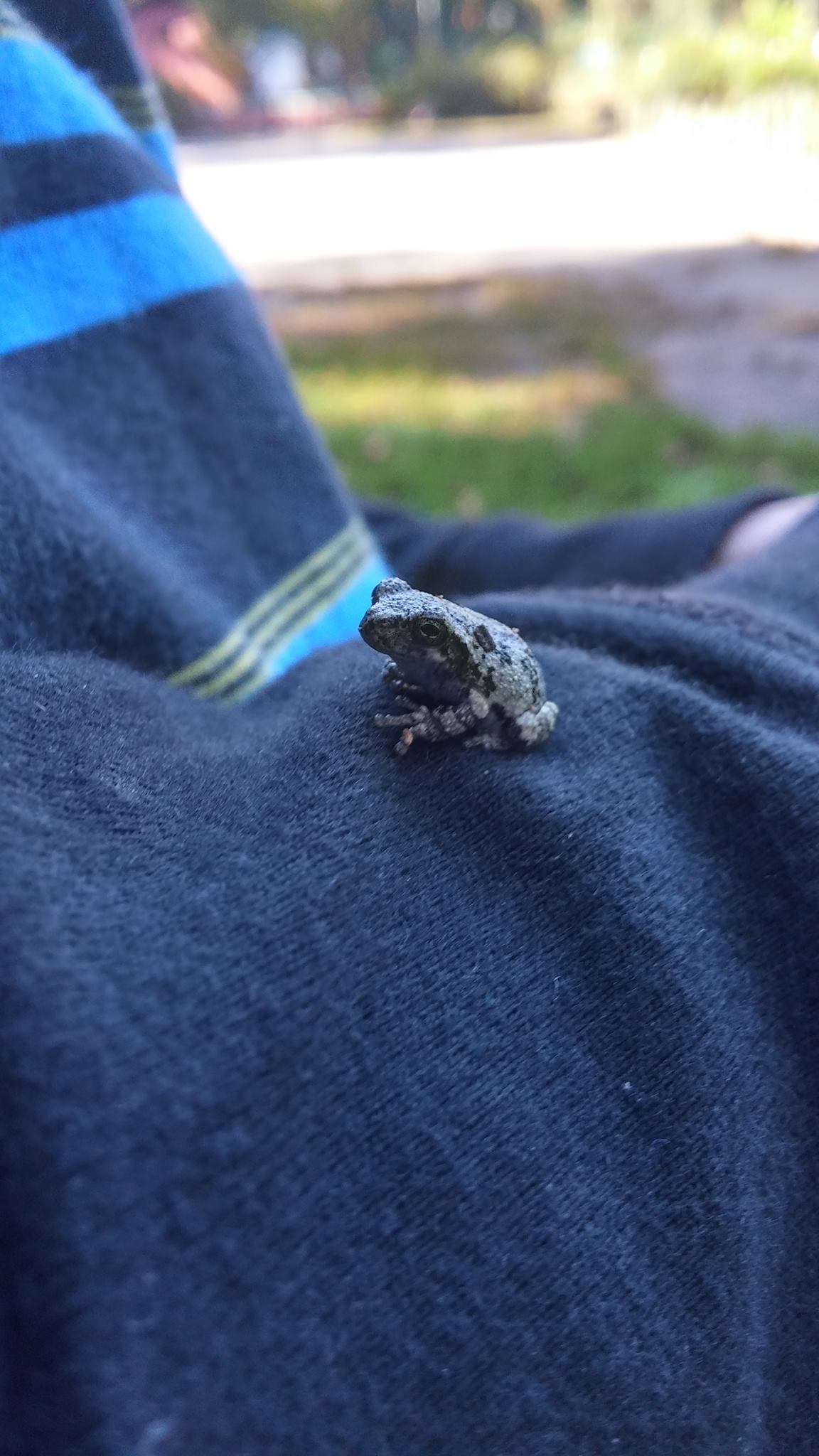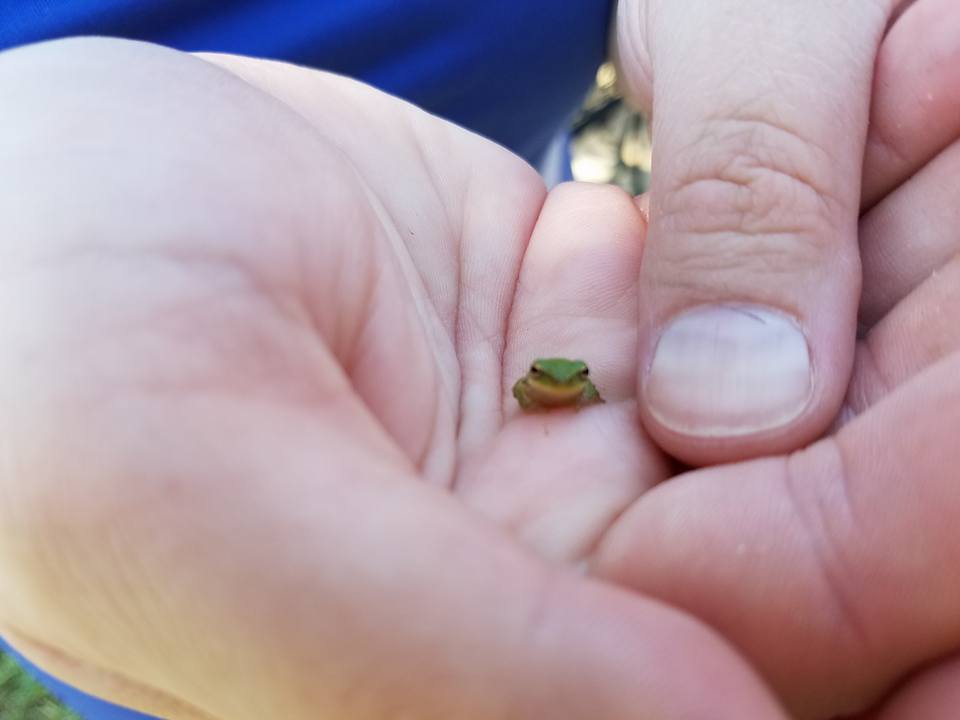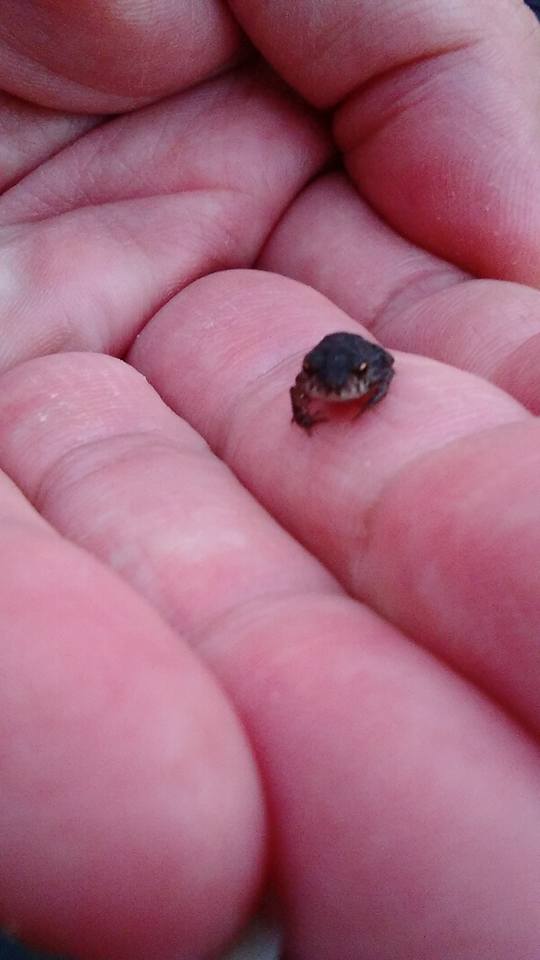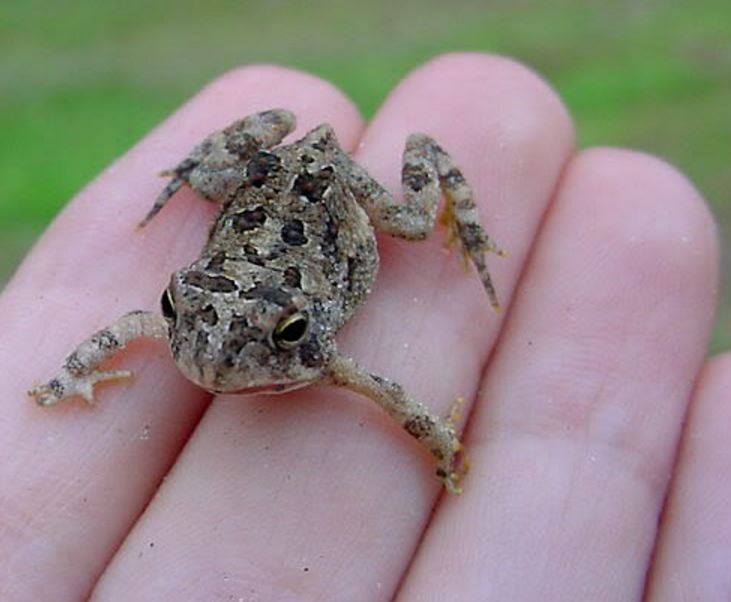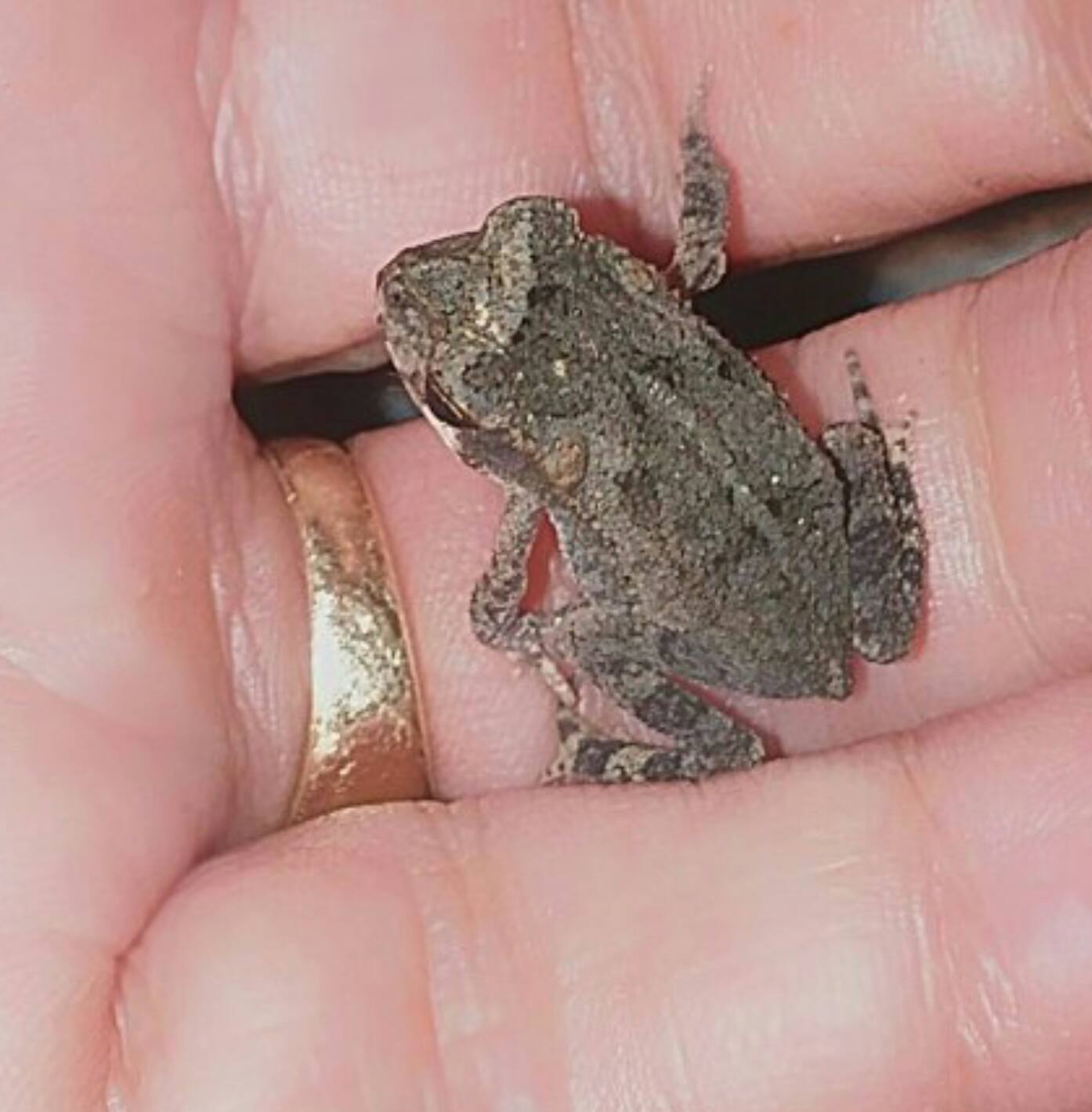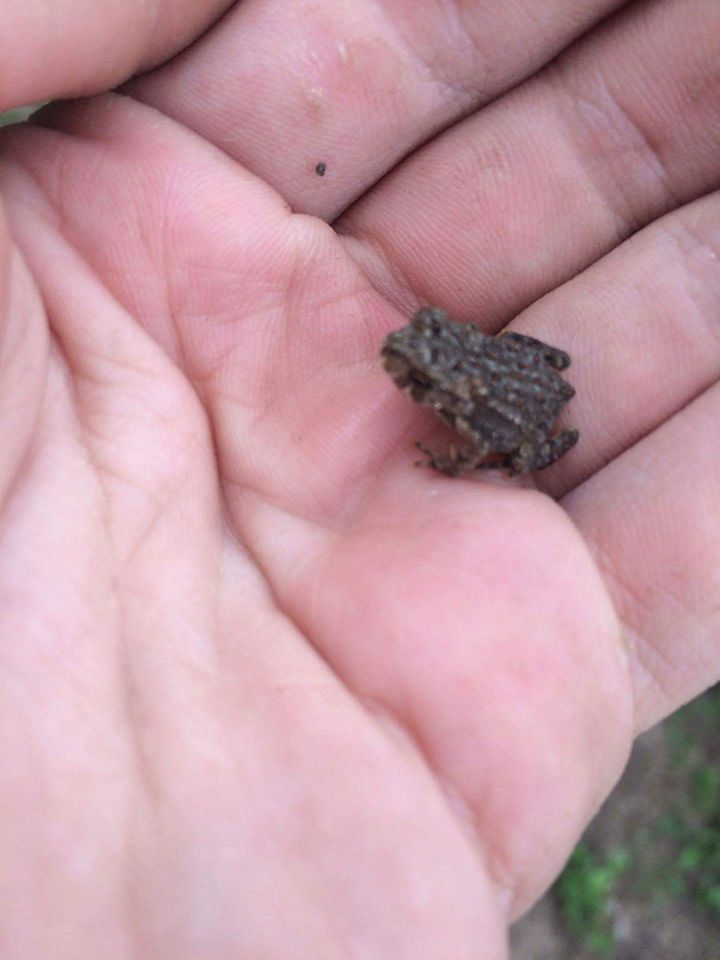Once victims of their own beauty—plume hunters nearly eradicated them from the U.S. more than a century ago in the fashion-driven slaughter of wading birds that eventually led to the founding of the Audubon Society—roseate spoonbills have rebounded along the Southeast and Gulf coasts. though they're still a threatened species in Florida. They hunt for crustaceans, some of which provide the pigment for their pink plumage, by swinging their heads side-to-side in shallow waters. Many thanks to Lisa Barnes for sharing these wonderful photos with us from Huntington Beach State Park in South Carolina. (Take note of the wood stork, itself a threatened species, wading with a spoonbill in one of the photos.)
A Thrush from Bangladesh
Recently we were excited to receive the first photo shared with us from Bangladesh, a densely-populated, Iowa-sized country that was known as East Pakistan before it won its independence from Pakistan in 1971. Today it is home to 160 million people, more than 460 bird species and 89 types of mammals, of which 31 are endangered, critically endangered or vulnerable. “This is a photograph of an orange-headed thrush that I took in Dhaka, Bangladesh last year," writes Ihtisham Kabir in sharing his beautiful shot. "It is fairly common, but not easily visible because it stays in the underbrush.”
Photo of orange-headed thrush shared with The Naturalist's Notebook by Ihtisham Kabir in Bangladesh
Learning about nature in other countries is not just fascinating, but also important in coming to understand the astounding but threatened diversity of life on Earth, a home that we share—or rather, need to learn how to share—with an estimated 8.7 million other uniquely evolved, irreplaceable species of flora and fauna. It's uplifting to find people on the other side of the planet who love nature and science as we do. "We have other birds such as masked finfoot and Indian skimmers," Ihtisham adds. "I will send you photos once in a while.... Love your page."
Think Small: What Would You Do to Help Toads, Frogs and Salamanders?
When we shared on our Facebook page the story of a neighborhood in Philadelphia that blocks off a streets for two weeks each spring so that thousands of baby toads can cross from a reservoir on one side to woods on the other side, many hundreds of people responded from across the country and around the world with photos and uplifting tales of local efforts to protect toads, frogs, salamanders and other wildlife. "It would be a much better planet if all humans helped our wild critters," wrote Lisa Phillips. "We can all do our part and help."
Here are some of the other comments and images people shared with us:
Laurie Kelley Stewart shared with us her photo from Pennsylvania and wrote: "Each creature from the smallest insect to the largest mammal is an intricate part of our ecosytem."
• Heather DiGiacomo offered a firsthand account of the Philadelphia toadlet effort, which is organized by by the Schuylkill Center for Environmental Education and the people of the Roxborough neighborhood" "We participate in this every year since my daughter was walking, she is eight now. It really drives home the whole sand-dollar, "I made a difference to that one" thought [http://www.ispeak.com/sanddollar.asp]. Tons of kids in pajamas with buckets and flashlights looking for toadlets and crossing them across the street safely; it's borderline magical."
• From Carole Fuller: "Amherst, Massachusetts, has a volunteer-staffed salamander crossing in springtime, slowing traffic and assisting the creatures across a local highway."
• Kristen Murphy wrote, "AVEO [Ashuelot Valley Environmental Observatory] at the Harris Center for Conservation Education] in New Hampshire runs a salamander crossing brigade of volunteers assisting with the safe crossing of frogs and salamanders heading to vernal pools for spring mating."
• From Ann Waite: "We have a school/home for autistic children in our village and every spring a group of the youngsters goes around the village with a teacher and collects frogs, toads and newts from the road drains where they get stuck."
• From Jim Rawdon: "Sand Run Park in Akron, Ohio, closes off one of its roads in the spring to allow salamanders to cross."
• From Barbara A. Ely: "Tuckerton, New Jersey, has turtle crossing signs and puts out neon warnings in season. We all stop our cars to help them cross. It's awesome."
• From Stacy Cole: "In southern Germany there are massive frog crossings where they have up road signs, made tunnels, nets along the road, etc. It's really amazing the work they have put into their frog crossings."
Photo shared by Beate Kirk, who wrote: "A tiny toad from southwest Missouri. [I was] camping by a creek in the summer. Get lulled to sleep by all the frog sounds."
• From Lori Worpell: "When traveling in western Germany we found that they had built tunnels under the highways to accommodate the frogs."
• From Andra Kiser: "When I lived in Winterhausen, Germany, we had frog crossing warnings on the road to a neighboring community. And each spring, they would line the roads with a rubbery barrier maybe a foot high to stop the frogs from crossing and getting killed by traffic."
• From Carolyn Carr Woolfenden: "The children in Reykjavik, Iceland, gather up straying baby puffins at night that are confused by car headlights and other city lights. Then they take them back to their nesting area where they are safe."
• From Paula Anderson: "They do this on Riverside Road in Richmond, Virginia, for spotted salamanders."
• From Ellen Spain: "Here in the UK in Norfolk [England] we also help the toads cross the roads to their breeding ponds :-) xx."
• From Mary Hickman: "Tilden Park in Berkeley/Oakland, California, closes the South entrance from November to May to protect the amorous newts, who cross the roadway during their mating season."
Photo shared by Stacy Chamness, who wrote: "South Park Drive in Tilden Park (Berkeley, California) is closed from October to March for California newt migration."
• From Alexander and Kimberly May: "In the center of town in Longview, Washington, they have a squirrel crossing bridge above traffic between the trees. It's very cute."
• From Cynthia Nelson Guion: "The squirrel bridge built in Longview, Washington, is a great example of how one man's idea to give the squirrel population safe passage led to more community awareness—and more bridges!" [Note: It's called the Nutty Narrows Bridge and was dreamed up by a man named Amos Peters, who was tired of seeing squirrels hit by cars: https://en.wikipedia.org/wiki/Nutty_Narrows_Bridge]
• From Jane Ann Zerkel: "There's a stretch of road in Southern Illinois that is closed every spring and every fall to protect all the reptiles and amphibians moving seasonally between the low swampy area and the bluffs. It is referred to as "Snake Road" because of the huge number and variety of snakes and other critters that can be seen there."
• From Marian Woodside: "There's one section of main road closed in southern Illinois every year...maybe twice a year??...to allow aaaaaall kinda critters to migrate unharmed."
• From Jill Spreenberg Robinson: "Shawnee National Forest [in Illinois] closes down Snake Road" to protect reptiles and amphibians migrating between the bluffs and swamps.
• From Linda Feinberg: "We saw special overpasses built over the roads in Alberta for the wandering animals."
• From Barb Duhlman Deibel: "There's a place near mobile Alabama that has 'Slow: Turtle Crossing' signs."
A turtle-crossing sign like the one Barb Duhlman Deibel mentioned. This one is in British Columbia and was photographed by Christian Engelstoft.
• From Anita Rosario: "[Kentucky] stopped allowing tours of Mammoth Cave during bat hibernation months."
• From Cathy M. Kirkland: "In Richmond, Virginia, part of River Road is closed every year for something to cross, but I don't remember what!" [Note: Coincidentally, the Delaware Water Gap National Recreation Area closes its River Road each spring so that various amphibians, including frogs and salamanders, can cross safely.]
• From Kay Ltz: "In a certain Asian country they have mass butterfly migrations and they put nets over all the roads and freeways so the poor things don't get sucked in by the vacuum wind from traffic!!!!" [Note: Not sure if this is the example Kay is referring to, but Taiwan protects purple milkweed butterflies during migration time by using nets and also closing one lane on highways.]
• From Katie Blue: "My elementary school had ducks that laid eggs in the courtyard. Certain classes would get to make a human wall across the gym when it was time to let them leave."
• From Robyn Roberts Cooper: "There is a children's picture book about this very thing! It's called Toad Weather by Sandra Markle."
• From Jean Eno: "Years ago we stopped mowing our little patch of lawn where little toadlets feed every year. In addition to saving their lives, we now have far greater diversity of vegetation, and of course insects, and then of course birds and other wildlife. And we don't have to mow anymore, because the naturalization self-regulates!"
• From Pattie Roggenkamp: "Love this story! We have 100s of these little guys in the late spring. So cute! Mowing the lawn becomes a challenge!!"
• From Vangi Burnett: "Good to know that I'm not the only one that rescues baby toads."
• From Kathleen May: "We herd frogs off the road in our neighborhood when we walk at night!!"
• From Candy Everly Gore: "Even when I'm turning my compost pile, I try to move the earthworms so I don't hurt them. lol"
• From Jeanette Locher: "I've stopped traffic on a busy road to allow mama to cross with her brood of ducklings!"
• From Kim Engels White: "I always bring in American toad eggs from my pond, and put them in an aquarium to raise. My kids get to watch the process. This year I released 111 toadlets back into my garden. I put them under the tomatoes, and raspberry bushes where I get fruit flies."
• From Madelyn King: "We don't clean our pool in spring until the frogs start relocating (have a salt system on pool—no chemicals). They have a spot they love to use for breeding, so we dug it deeper and we add water if we don't get enough rain. Around here, you're instructed to watch your step. Rules apply to everything...from spiders on up. Harm nothing or go away."
• From Peter Falotico: "Great story and I too have the problem in the spring with mowing the lawn or figuring out how to chase the hundreds of little frogs and toads away. Easy choice for me. I love them."
• From Mary K. Donigan: "Thanks so much for this post! It was much appreciated today when I needed some affirmation about the basic goodness of people! And brought back so many wonderful memories of my frog and toad friends!"
• From Jean Price: "Loving nature...an investment in ourselves and our world!! Pays good dividends, too!!"
—Craig Neff and Pamelia Markwood
Bernd Heinrich and the Case of the Dead Woodpecker
The great naturalist, biologist and writer Bernd Heinrich made a startling discovery this week while walking in the woods near his cabin in western Maine. Here's a Naturalist's Notebook video explaining the mystery in Bernd's words:
The Notebook is still a bit chaotic, but by June 21 we'll have it ready.
Sneak Peek at the Notebook
I haven't had time to blog lately because we've been so busy getting the Notebook ready for its season opening on June 21.
We've set up bookcases downstairs and are filling them with the more than 1,000 natural-history titles we've added—one of New England's biggest and best collections. Art workshops and photography hikes are being planned. Our Congolese bonobo has moved in. A bird canopy is rising. The Natural League baseball standings board (a.k.a. the Little Green Monster) is up and operating. Dogs and elephants are in the house. I am trying to learn how to levitate the Earth with my hands (you'll understand if you visit).
E.O. Wilson, the renowned naturalist, sits at the top of the staircase smiling at us as we tote art supplies and the makings of an ant world up to the second floor. E.O. has discovered more than 300 species of ants himself and has studied how a massive ant colony can function as single super-organism. As Pamelia, I and two wonderful College of the Atlantic students, Haley and Sarah, worked together yesterday, I felt as though we were our own super-organism, carrying each piece of the new Notebook to exactly the right place.
At day's end I stopped to see our friend Betty, who has been making beautiful knitted goods for the shop. She gave me the sort of gift I didn't often receive in my pre-Notebook days: a beaver skull with one loose tooth. She'd found it on the ground near her cottage. We will add it to the Notebook's growing collection of specimens.
If any of you happens to be a small-animal dentist, please stop by this summer.
If you want to see sights like this—a great white egret flying by last July—consider a summer trip to Maine's Mount Desert Island, Acadia National Park and The Naturalist's Notebook. This egret landed near a pair of great blue herons; all dined peacefully together from the waters on MDI's northern side.
A view of nature...
Mount Desert Island is an excellent area for spring and fall bird-watching, too. Many varieties of warblers arrive and depart—a tough test of your ability to distinguish species!
Read More
